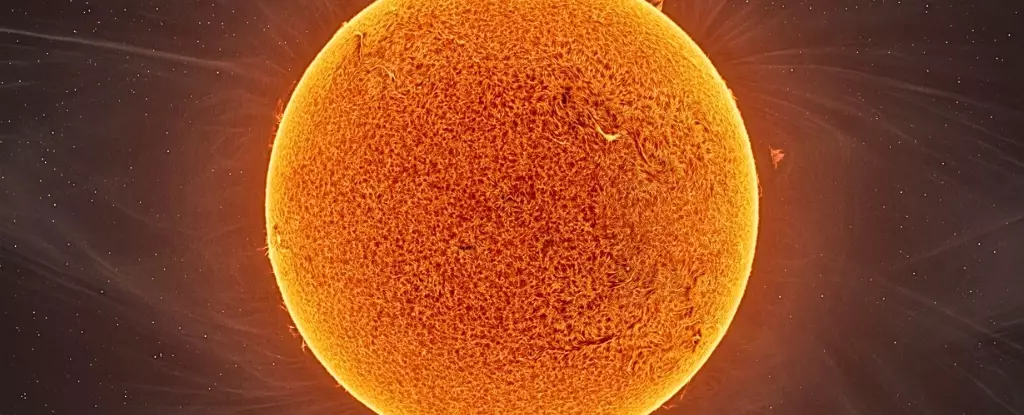The cosmos is a vast, uncharted symphony of natural phenomena, one of the most enchanting being the starquakes emitted by massive stars throughout the universe. These awe-inspiring vibrations, akin to musical notes, are produced by the dramatic bursting of gas bubbles that ripple through the dense bodies of stars. Recent breakthroughs published in the journal Nature have provided unprecedented insights into how these starquakes can unravel complex narratives of stellar evolution and the history of our galaxy. This research, spearheaded by scientists utilizing data from the renowned Kepler space telescope’s K2 mission, focuses on the star cluster M67, an ensemble located nearly 3,000 light-years from Earth. By scrutinizing the frequency signatures of starquakes within this cluster, researchers have engaged in a profound exploration of the life cycles of giant stars, illuminating their inner workings as never before.
The Instrument of Cosmic Insight
Intriguingly, starquakes can be likened to the seismic activity that allows us to probe the Earth’s interior. Stars resonating with their unique vibrational frequencies can be observed through subtle changes in luminosity, revealing secrets about their internal structures. The vibrations produced during starquakes manifest in a spectrum of frequencies, each denoting distinct acoustic signatures intricately linked to a star’s mass and composition. This is not merely a metaphorical comparison; just as geologists harness earthquake data to elucidate the Earth’s hidden layers, astronomers can decode the song of stars to gauge the complexities beneath their surfaces.
Historically, researchers have focused on the “melody” of starquakes to decipher the age and evolutionary phase of stars. The cluster M67, populated with celestial bodies sharing chemical characteristics with our Sun, offers a unique opportunity to understand how stars evolve in tandem. The most recent studies suggest that while younger stars sing with greater frequency variations that detail their hydrogen-burning capacities, older giants such as those in M67, beyond mere age, reflect evolutionary changes through their vibrational patterns.
From Old Assumptions to New Discoveries
One of the most significant findings to emerge from the recent study is the abandonment of previously held assumptions regarding the “small spacing” frequency signatures in older stars. Traditionally viewed as inadequate sources of information regarding a star’s internal processes, these frequencies have proven to present a wealth of data about the internal state of red giants. Astonishingly, observational results revealed that as the stars progress through their conscious lives, the hydrogen-burning layers surrounding their inert combustion cores thickened and evolved, altering these frequencies in detectable ways.
The revelation that stalling occurs within a distinctive phase of giant stars’ evolution—the stage where the enveloping layer becomes increasingly dominant—demonstrates a critical turning point in our understanding. At this stage, approximately 80% of a star’s mass comprises the outer envelope, which enters a turbulent, sound-sensitive domain. The steep gradients of sound speeds across these layers directly influence starquake frequencies, providing a keen insight into stellar behavior during this immense transition.
Mapping the Galactic Narrative
The implications of these findings extend beyond the study of individual stars; they enable astronomers to reconstruct the evolutionary story of the Milky Way itself. Like rings in a tree trunk, each star embodies the history of the environment and conditions under which it formed. By understanding the age and evolution of stars in clusters like M67, researchers can thread together the intricate narrative of our galaxy’s formation—a tapestry sewn together from the remains of smaller celestial communities that have merged over eons.
Furthermore, these findings hold significant relevance for our understanding of the Sun’s potential trajectory. As scientists decode the oscillation signatures of stars in a mature phase akin to our own Sun’s future, they peer into the deep future of our own solar system. The insights gleaned from analyzing M67’s stars illuminate parallels between the evolution of stars through time, equipping us with greater predictive power concerning our cosmic neighborhood’s destiny.
A New Era of Celestial Research
The study of starquakes reveals more than mere astrophysical phenomena; it has unlocked an entire new avenue of exploration for astrophysicists and cosmologists alike. The implications of this work are profound: with refined observational techniques and a fresh understanding of stellar acoustics, researchers may now re-examine previous celestial data, listening anew for the valuable stories encoded within the melodies of distant worlds. The cosmos is indeed a grand conductor, leading us in the dance of discovery, urging us towards a fuller understanding of the symphony that is the universe.

